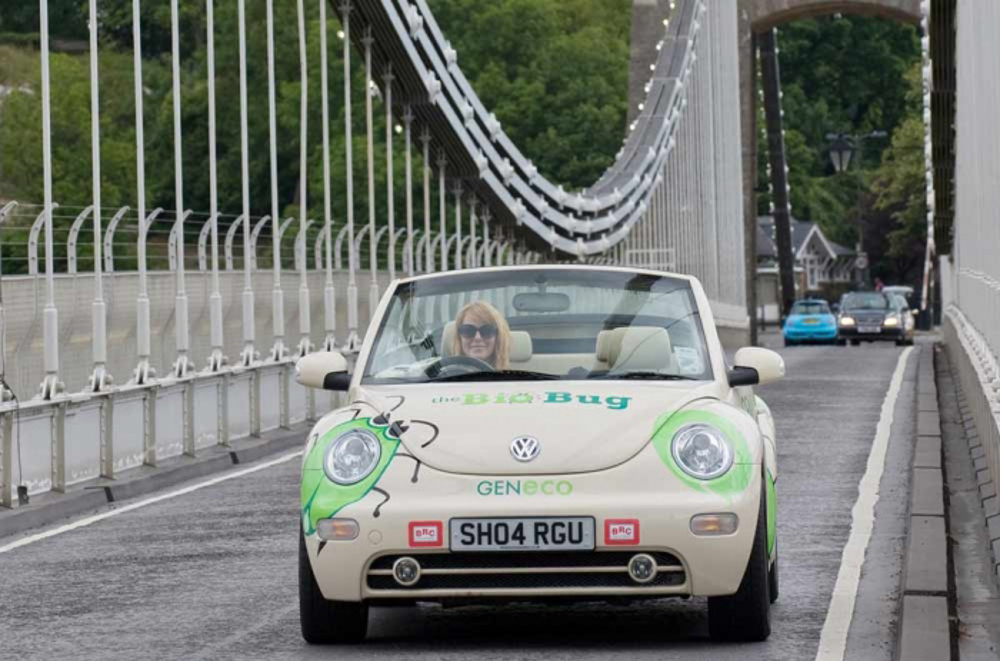Case study: Bio-Bug
The future of green motoring
The future of green motoring
The Bio-Bug is the UK’s first VW Beetle powered by human waste. The waste flushed down the toilets of just 70 homes produces enough biogas to power the Bio-Bug for a year!
"On first hearing of the Bio-Bug, some people will smile, and some people will go 'yuck'! Either way, what I hope they realise is that this is exactly the kind of innovation we now need for a more sustainable world - and those directly involved should be proud they're making a small but significant contribution to it everyday!"
Biomethane is produced at Bristol sewage treatment works by upgrading biogas produced from anaerobic digestion - a completely natural process in which micro-organisms break down biodegradable material in the absence of oxygen.
Prior to the installation of our gas to grid plant, the biogas produced at Bristol sewage treatment works was used to generate electricity to power the site and supply the National Grid.
In 2010, we decided to investigate powering a vehicle on the gas to demonstrate its use as a sustainable alternative to using fossil fuels for vehicle transport.
Beetle-mania
The choice of car was inspired by local students who took part in a workshop. They thought it would be appropriate that a "poo-powered" car should be the classic VW Beetle Bug because bugs naturally breakdown waste at sewage works to start the treatment process which goes on to produce energy.
Bath-based Greenfuel Company converted a VW Beetle to run on biogas while employees from GENeco ran a workshop at a University of Bath for teenagers from schools in Bath and North East Somerset to come up with ideas for the car's design.
Innovation in action
The last step in the process was to upgrade the biogas so it could be used as vehicle fuel without affecting vehicle performance or reliability. With support from the South West Regional Development Agency, GENeco imported specialist equipment to treat the biogas in a process which involves carbon dioxide being separated from the biogas.
The result was the very successful Bio-Bug which performs just like any conventional car with no loss of performance. At the time, the Bio-Bug received widespread media attention and coverage reached an estimated 80 million people worldwide.

What about the future?
Since the initial trial of the Bio-Bug, developments on our Bristol site have expanded to include food waste treatment. This has increased the volume of biogas produced on site to a whopping 56,000m3 a day.
In addition, our gas to grid plant now upgrades the raw biogas to biomethane, which allows it to be used as a direct replacement for natural gas in domestic supply and CNG-fuelled vehicles, such as the world-famous Bio-Bug.
